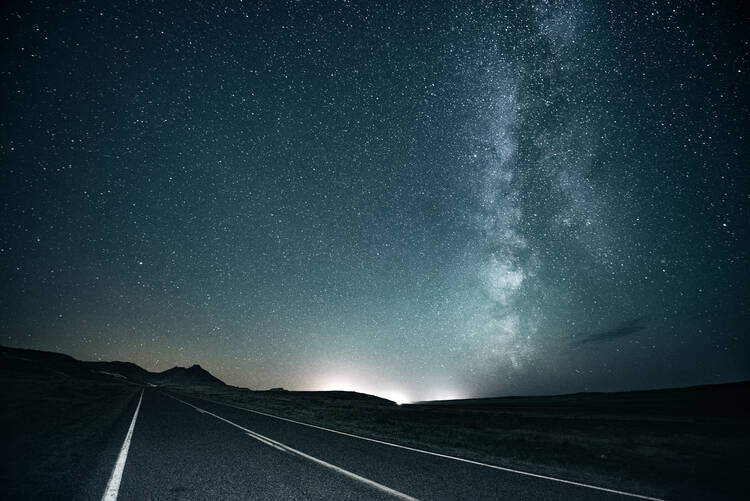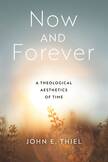Review: Contemplating death, eschatology and eternity
When asked by a disciple about death, Confucius replied: “We don’t even know about life. How can we know about death?” In the Katha Upanishad, the boy Nachiketas is granted a boon by Yama, the god of death. The child asks to know what comes after death. Yama replies: “Boy, do not ask me about matters of life and death. Even the gods are not clear on all points.”
The author of 1 John tells us, “Dear friends, we are children of God now; what we will be, has not yet been made known.” St. Paul writes to the Corinthians, “Eye has not seen, ear has not heard, mind has not conceived…the things God has prepared for those who love God” (1 Cor 2:9) and admonishes them for being “foolish” in trying to imagine the future resurrection in physical terms.
Such cautions notwithstanding, John E. Thiel of Fairfield University ventures to propose a “thick” eschatology based on the idea of a continuation of the human response to grace into an afterlife in Now and Forever: A Theological Aesthetics of Time. Thiel characterizes his project as a “thought experiment,” “a speculative approach to eschatology” and a contribution to a “Christian imaginary.” He also calls it a “theological aesthetic.”
Timeless eternity, for Thiel, belongs to God alone. He proposes that after the Last Judgment, humanswill enter unending time. Thiel’s “imaginary” runs counter to the common theological view. After death, we are told in Scripture, “time shall be no more” (Rev 10:6); existence after death is participation in God’s being, an eternal present; our “divinization” begins in life; the “resurrection” means the eternal validity of the person we become in time. Every present time in life touches eternity and lives in God. For Thiel, by contrast, by resurrection we enter new time, which will go on without end.
Thiel rejects what he considers the orthodox teaching of the mainline Christian churches: that original sin makes all suffering deserved, and it is inflicted by God’s retributive justice.
Although his primary goal is the construction of a theological aesthetics of time, Thiel is also concerned with the aesthetics of beauty. His “Catholic imaginary” proposes an objective notion of beauty based on classical aesthetics. “The beauty of events in time [is] a reflection of the beauty of God’s graceful presence to creation,” he writes. He uses that term, graceful, numerous times, defining it as “a quality of movement that—in human judgment, of course—defines an event individuated in time.” More specifically, Thiel describes graceful as “a quality of differentiated movements centripetally shaped into a symmetrical unity that makes for the beautiful event.”
Thiel turns from beauty to a discussion of the evils that seem to undermine it. He rejects divine causality behind innocent suffering. He likewise rejects theodicy, which he sees as evil because it is morally insensitive to people’s actual suffering. It assumes that “just the right words can transform evil into providence and that logic is the best medicine for a believer’s troubled heart.”
Thiel proposes that God “does not do death.” Much suffering is caused by human sin, but Thiel pleads ignorance as to the origin of natural evils. “We have nothing to say theologically about how (causally) or why (meaningfully) this sort of deathliness besets human lives.” Tragic events are not evil in themselves, he writes, but part of “creation’s providential movement in time.” (The reader might ask: How is this different from the “providential” response that Thiel rejects?) The proper reaction, he argues, is “proleptic waiting” for the fulfillment of God’s biblical promise to destroy death.
Thiel rejects what he considers the orthodox teaching of the mainline Christian churches: that original sin makes all suffering deserved, and it is inflicted by God’s retributive justice. I would argue, however, that Catholic Christianity does not teach this. Original sin does not make us personally guilty; it is called sin only by analogy. Suffering is not divine retribution. Moreover, the voluntary undergoing of undeserved suffering is crucial to both the satisfaction theory of salvation and contemporary soteriologies.
Further, in some contemporary theologies, the physical and moral evils in the world are results of evolution and the law of entropy. Theologies of the cross, especially liberation theologies, explore the meaningfulness of suffering, particularly innocent suffering. A treatment of those theologies would have been beneficial here.
On the beauty of tradition, Thiel writes: “All believers as believers judge tradition to be beautiful for what it is and for what it might be.” He espouses the Catholic belief that tradition is a means of revelation alongside Scripture. Although it develops, it presents “unchanging truth.”
The final chapter of the book returns to the continuity of grace with resurrected life after death. Although Thiel claims to offer a “thick” eschatology, “to speculate fulsomely” [sic] about heavenly time, his treatment is sparse. Thiel admits that “time is inseparable from the three coordinates of space.” Yet he considers only time. But if there is a physical resurrection, it must take place in space-time. Where? When? In the Avesta, Zarathustra asks God how the resurrection can take place. God, the “Wise Spirit” (Ahura Mazda—yes, that’s where the name of the car comes from) tells him that it will be easy for God to re-create everything. But how can a new creation be conceived in modern cosmology?
Thiel insists that “in order for creatures to remain creatures eschatologically, they must continue to be in time.” He presumes that being in earthly space-time is the only way of being a creature, but could there be creatures that are not spatio-temporal? Scholastic theology thought of angels that way. For humans to remain creatures, Thiel says, they must be “eternally” what they have become in history. Doesn’t that mean they are in God’s omnipresent eternity what they became in life? Grace and “divinization” must preserve the distinction between God and creatures. But that distinction is unique: Aquinas says that the very esse of humans is “participation” in the divine esse. Grace raises that participation to another level.
For Thiel, the beatific vision is not reserved for the saints but is given to all. I was reminded of a different twist on this idea in Giotto’s “Last Judgment in the Arena Chapel” in Padua, where the refulgence from Christ is at the same time the light of heaven and the fire of hell. The difference is in how it is received. “It is this [beatific] vision that brings judgment as the self-revelation of utter unworthiness to all, as well as the conversion of all by the irresistible power of grace,” writes Thiel.
Those looking for a poetic approach to religion will find much by which to be edified. Thiel’s treatment of hope and waiting are valuable.
Thiel does not think that we will be idle in heaven. No rest for the wicked, but neither for the good, according to Thiel. We must forever perform virtuous acts. “The beauty of eschatological time lies in its capacity to offer an infinite horizon for resurrected persons to act in order to negotiate morally the sin they have committed.”
What could it mean to “negotiate” past sin? Would this effectively be an everlasting purgatory? No; like St. Bonaventure (although he is not mentioned), Thiel supposes that endless progression in love is beatific. Thiel reminds us that “the representation of heavenly life has a solid footing in the history of Christian art and poetry.” True, but would anyone want to live forever the kind of existence they portray? (Excepting perhaps the vision of St. Brigid of Ireland, who imagined heaven as a lake of ale.)
Who is this book for? Non-theologians brought up in traditional Catholicism may find correctives to naïve ideas they absorbed—for example, that “the suffering that issues from natural events is divine retribution.” Those looking for a poetic approach to religion will find much by which to be edified. Thiel’s treatment of hope and waiting are valuable. But his excursions into abstruse and dated topics, his vagueness and his sometimes-convoluted prose might discourage readers.
What of professionals? Much of the book’s content is well-trodden ground, as contemporary Catholic theologians do not need to be told that grace is offered universally, or that tradition develops, or that God does not inflict evils on people. Although the book is presented as a “proposal,” scholars might be frustrated by Thiel’s lack of concern to justify his theological and aesthetic positions.
This book left me with appreciation for Thiel’s erudition, but with an increased conviction that Confucius, St. Paul and the First Letter of John are right.
This article also appeared in print, under the headline “Contemplating Eternity,” in the November 2023, issue.











